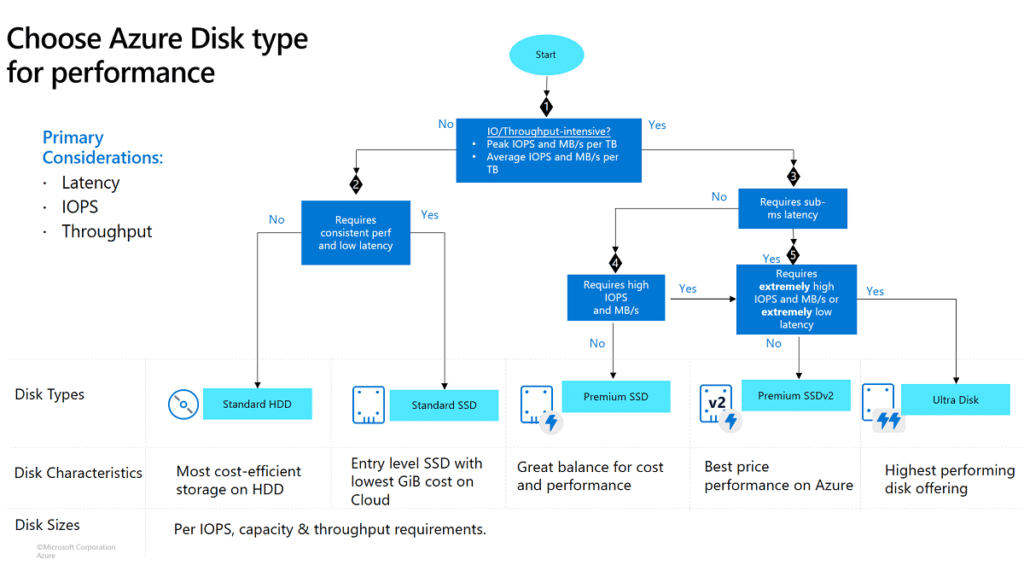Azure Virtual Machines (VMs) are a key component of Microsoft Azure’s Infrastructure as a Service (IaaS) offerings, providing scalable, flexible, and cost-effective compute resources. However, to fully leverage the power of Azure VMs, it’s essential to optimize their performance and scalability. In this article, we’ll explore various strategies and best practices to maximize the efficiency of your Azure VMs and how to Optimize Azure Virtual Machines for Peak Performance.
Table of Contents
1. Choose the Right VM Size and Type
Selecting the appropriate VM size and type is crucial for optimizing performance. Azure offers a wide range of VM sizes and types, each designed for specific workloads. Consider the following factors when choosing a VM:
- Workload Requirements: Assess your application’s CPU, memory, storage, and network requirements. For example, compute-optimized VMs are ideal for CPU-intensive tasks, while memory-optimized VMs are better suited for memory-intensive workloads.
- Scalability Needs: Determine whether your application requires horizontal (adding more VMs) or vertical (increasing the size of existing VMs) scaling.
- Cost Efficiency: Balance performance and cost by selecting a VM size that meets your needs without over-provisioning resources.
For detailed information on available VM sizes and types, refer to the Azure Virtual Machines documentation.
2. Optimize VM Disks and Storage
Azure disk performance can significantly impact the overall performance of your VMs. Follow these best practices to optimize VM disks and storage:
- Choose the Right Disk Type: Azure offers different disk types, including Standard HDD, Standard SSD, and Premium SSD. Premium SSDs, Premium SSD v2 or especially the Ultra Disks provide the best performance and are recommended for production workloads requiring high IOPS and low latency.
- Use Managed Disks: Managed Disks simplify storage management and provide better reliability and scalability compared to unmanaged disks. They also offer features like snapshots and backup.
- Implement Disk Caching: Enable read/write caching for frequently accessed data to improve performance. For read-heavy workloads, enable read-only caching.
- Optimize Disk Throughput: Ensure that your VM size supports the desired disk throughput. For high-performance workloads, consider using ultra disks, which offer configurable performance and low latency.

Refer to the Azure Disk Storage documentation for more details.
3. Leverage Azure Virtual Machine Scale Sets
Azure Virtual Machine Scale Sets (VMSS) enable you to deploy and manage a group of identical VMs, ensuring high availability and scalability. By automatically scaling the number of VMs based on demand, VMSS helps maintain consistent performance during peak loads. Key features of VMSS include:
- Automatic Scaling: Configure scaling rules based on metrics like CPU usage, memory consumption, or custom metrics.
- Load Balancing: Distribute traffic evenly across VMs using Azure Load Balancer or Application Gateway.
- High Availability: Ensure VMs are distributed across availability zones or fault domains to minimize downtime.
Learn more about VMSS in the Azure Virtual Machine Scale Sets documentation.
4. Optimize Networking for VMs
Network performance plays a crucial role in the overall performance of your VMs. Implement the following best practices to optimize networking:
- Use Accelerated Networking: Enable accelerated networking for VMs to reduce network latency, improve throughput, and decrease CPU utilization. This feature is available for specific VM sizes and types.
- Configure Network Security Groups (NSGs): NSGs help control inbound and outbound traffic to your VMs. Properly configured NSGs enhance security and prevent unauthorized access.
- Implement Virtual Network (VNet) Peering: VNet peering allows seamless communication between VMs in different VNets, reducing latency and improving performance.
- Optimize Load Balancing: Use Azure Load Balancer or Application Gateway to distribute traffic efficiently and ensure high availability.
Refer to the Azure Networking documentation for more information.
5. Monitor and Optimize Azure Virtual Machines Performance
Continuous monitoring and optimization are essential for maintaining optimal VM performance. Utilize the following Azure tools and services:
- Azure Monitor: Monitor the performance and health of your VMs using Azure Monitor. Collect and analyze metrics, logs, and traces to identify and resolve performance issues.
- Azure Advisor: Get personalized recommendations for optimizing your VMs’ performance, security, and cost efficiency.
- Azure Cost Management and Billing: Track and optimize your cloud spending to ensure cost-effective resource utilization.
Explore these tools in the Azure Monitor documentation.
6. Implement Best Practices for VM Configuration to Optimize Azure Virtual Machines Performance
Configuring your VMs according to best practices ensures they perform optimally and remain secure. Consider the following recommendations:
- Regularly Update and Patch VMs: Keep your VMs up-to-date with the latest security patches and updates to prevent vulnerabilities and ensure optimal performance.
- Use Custom Images: Create custom VM images to standardize configurations and reduce deployment time. Custom images help ensure consistency across your VMs.
- Configure VM Extensions: Use VM extensions to automate configuration tasks and manage your VMs more efficiently. For example, the Azure Diagnostics extension helps collect and analyze diagnostic data.
Refer to the Automatic Guest Patching for Azure Virtual Machines to learn about the Update part of the Best Practices.
7. Optimize Azure Virtual Machines for Application Performance
Finally, optimizing the performance of your applications running on Azure VMs is equally important. Implement these strategies to enhance application performance:
- Implement Caching: Use caching solutions like Azure Cache for Redis to reduce the load on your VMs and improve response times.
- Optimize Database Performance: Ensure your databases are properly indexed and optimized for query performance. Consider using Azure SQL Database or Azure Cosmos DB for managed database services.
- Implement Content Delivery Networks (CDNs): Use CDNs to distribute content closer to end-users, reducing latency and improving load times.
Explore how to learn about the monitoring options using Azure Application Insights learning module.
Conclusion
Optimize Azure Virtual Machines for performance and scalability requires a comprehensive approach that includes selecting the right VM size and type, optimizing storage and networking, leveraging VMSS, monitoring performance, and following best practices for configuration and application performance. By implementing these strategies, you can ensure that your Azure VMs deliver the best possible performance, reliability, and cost-efficiency for your workloads.
For more detailed information and resources, visit the Azure Virtual Machines documentation and get started with my guide on how to build a homelab with Windows Server 2025.






